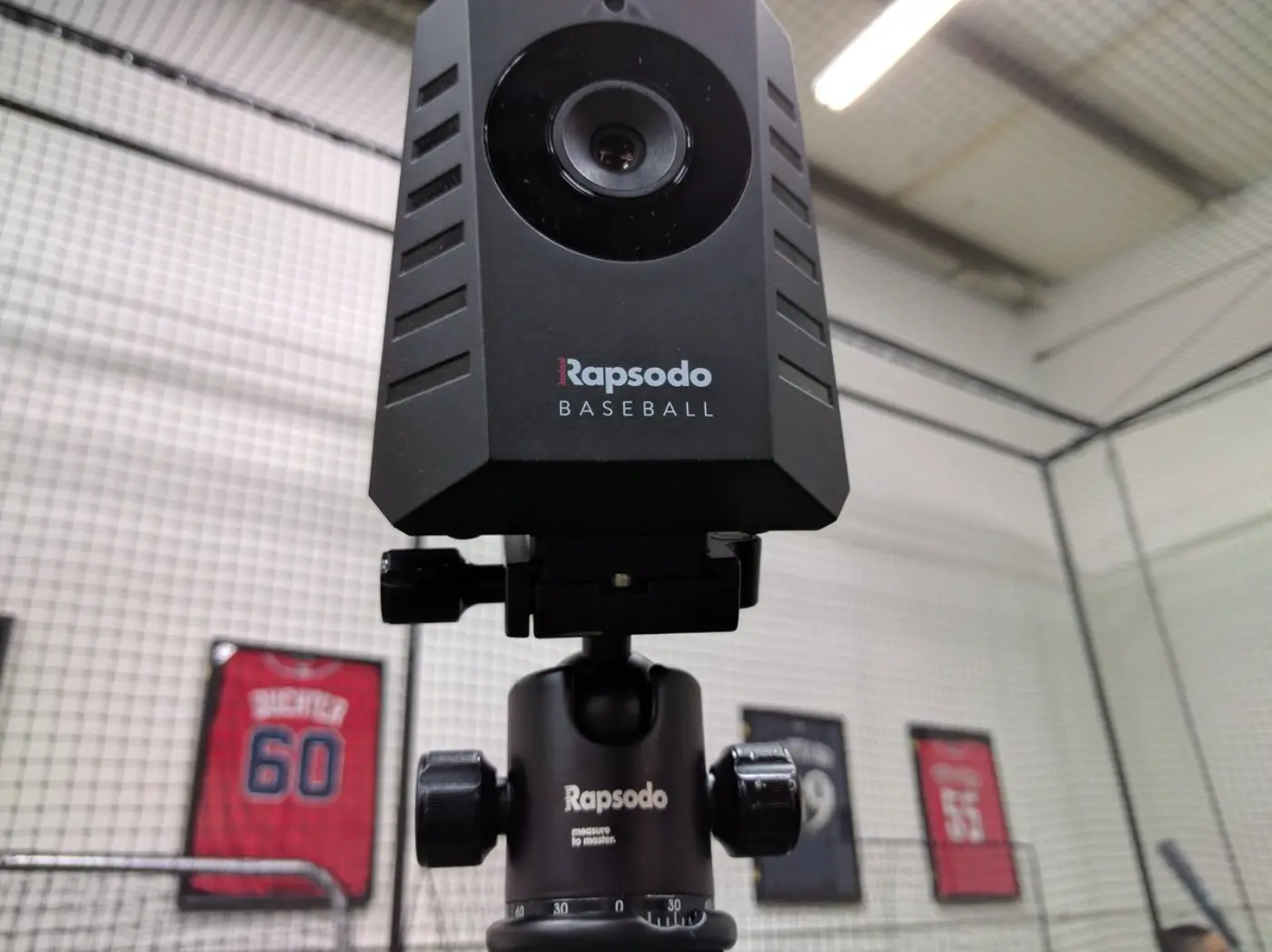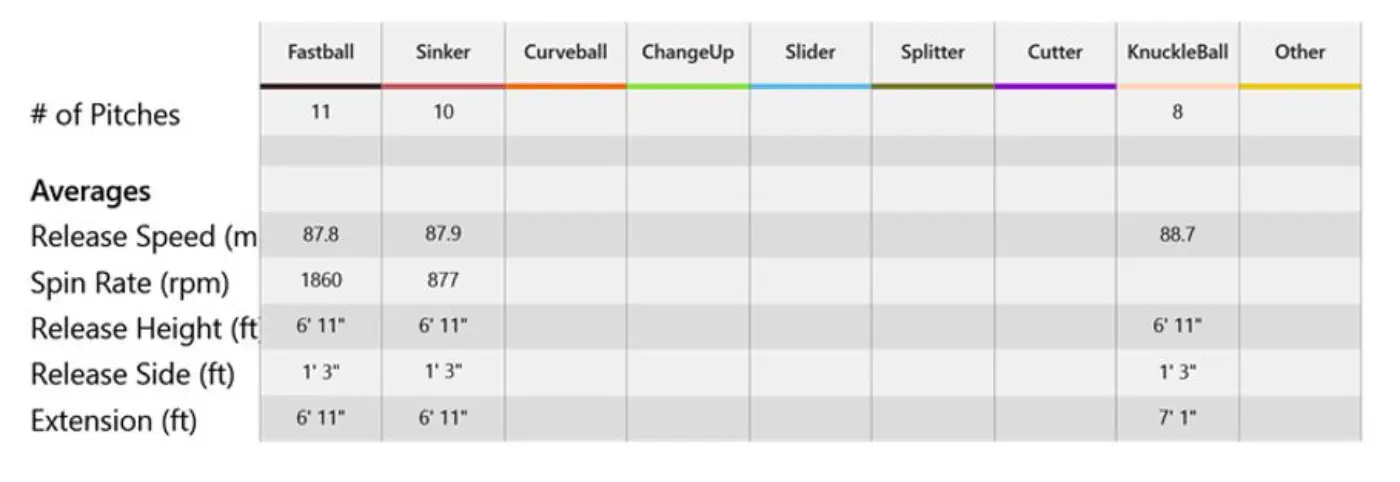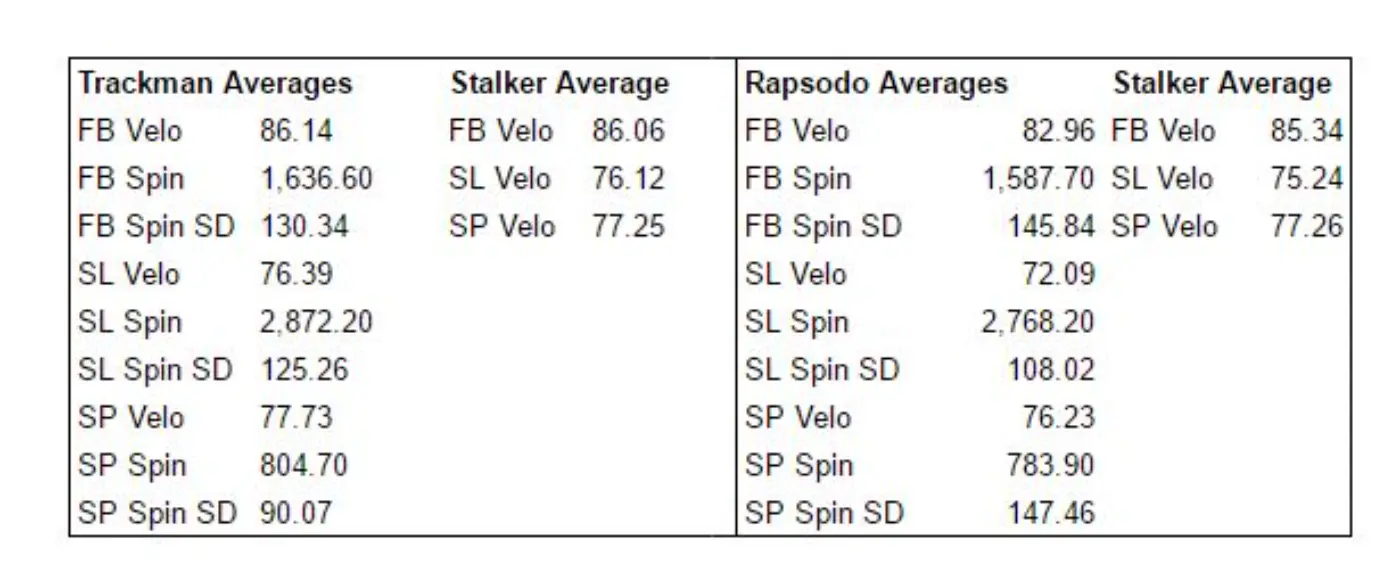Rapsodo, Trackman, and Pitch Tracking Technologies – Where We Stand

Major League Baseball is now in the Statcast era, where Trackman radar is fully operational across all MLB parks and tracking both pitches and batted balls. This offers several advantages to the previously-existing PITCHf/x and HITf/x systems developed by Sportvision, though the transition is not without a few drawbacks. Still, Trackman is here to stay and pitch tracking is a brand new frontier for front office analysts and academy owners everywhere.
The major drawback behind Trackman is the prohibitively expensive cost (around $30,000 MSRP per public reports; we are not at liberty to disclose the price our radar cost) and the somewhat black-box nature of the device. Rapsodo is a new pitch tracking technology that has been in closed beta testing for over a year, and Driveline Baseball was one of their main partners in helping to develop the blended radar + optical unit along.
The Rapsodo unit sits behind the plate and is well-suited for bullpen work, but unusable during a game. Trackman works in both instances, though it is much tougher to calibrate and maintain than the optical-based Rapsodo. Both units have their pros and cons, but for academy owners, Rapsodo – at 1/10 the cost, around $3,000 MSRP – is a much more attractive option at face value.
However, a real issue with Rapsodo initially in our beta testing was extremely inconsistent tracking of breaking balls. Rapsodo uses the inverse method of Trackman to track baseballs; it measures the spin rate and axis directly of the thrown baseball and derives movement and trajectory from that. Since Rapsodo does not capture the entire flight of the ball, working the trajectory backwards can cause errors. Compare this to Trackman, which has known issues with certain spin axes and pitch types (we’ll get into details later).
Rapsodo delivered their final Release Candidate production unit to us and we decided to do validation testing between the two units across a variety of tests to give facility owners, college coaches, and pro scouts insight on the device.
Disclaimer: Rapsodo has provided us with a free unit in exchange for a year’s worth of beta-testing and feedback. However, they did not request this validation testing and were not provided a copy of this blog post before it went public.
First Test: High vs. Low Spin (Trackman Solo)
This first test is more of an extension of our last blog post about spin rate, but shows off a major plus of the Trackman radar device – an excellent back-end that generates user-friendly reports. In the last blog post, The Effect of Fastball Backspin Rate on Baseball Hitting Accuracy (Higuchi et. al.) was referenced with this image to show the effect of spin on a pitched baseball:
We simply duplicated this trial using our Rawlings Pro Line Three Wheel Pitching Machine, which can set spin independent of velocity. We fired off a grouped series of pitches at near-identical velocities and initial trajectories but drastically different spin – a medium spin group, a low spin group, and a zero spin group with a 1:00 o’clock spin axis (a typical release slot for a high 3/4 right-handed pitcher).
The results back up the results from the Higuchi et. al. paper, as shown in the charts and strike zone plot below. First up is the Release Slot graph, which shows that the pitching machine had a consistent release point across all the tested pitches:
Next, we have the Pitch Classification report. I tagged medium-spin pitches as Fastballs, low-spin pitches as Sinkers, and no-spin pitches as Knuckleballs. As you can see in the chart, Trackman radar is unable to capture the spin rate of near-zero spin pitches such as the high-speed knuckleball/splitter variants we were throwing. However, all the other metrics stayed relatively constant.
Last is the money chart, which is the Pitch Location chart. Imagining a 1 o’clock release slot for a right-handed pitcher, you can see how the reduction in spin gradually reduces the arrival height across the plate in a predictable diagonal pattern that matches the release slot trajectory. Black dots are medium-spin, red dots are low-spin, and yellow/tan spots are near-zero spin.
This is an extremely easy way to see how varying spin while holding velocity constant can affect the location and movement of a pitch!
Second Test: Comparing Fastballs and Sliders to Trackman and Rapsodo
In early November, we used an older Rapsodo unit to perform a validation test between Trackman and their unit using two sets of thirty (30) pitches, including fastballs, sliders, and splitters at varying spin rates. The raw data from this test (and others) can be found in our Trackman Pitching Machine Data spreadsheet around rows 54-114 (be careful, it’s a mess in there).
The summary of the test follows:
This test showed that the Rapsodo pitching tracking unit could function as a replacement to the Trackman radar with one major exception and one minor note – the Rapsodo velocity was significantly lower than Trackman and the spin was very slightly slower. The spin as measured by Rapsodo should theoretically be slower since it requires taking pictures of the flight of the ball, and by averaging the spin rate, you have to factor in spin rate decay over the length of the pitch. This is not a major issue and can easily be corrected for if you truly need a Trackman equivalent number. However, velocity discrepancies were an issue that we had not seen in previous testing and caused us to run a second test with the production-quality unit.
Third Test: Rapsodo Velocity Validation
On November 17th, we ran another validation test using fastballs and sliders, comparing Rapsodo velocity vs. Stalker Pro 2 Radar velocity (the gold standard for MLB scouts). The results follow:
This showed the final Rapsodo unit and software could very precisely measure the velocity of pitches with no issue.
Fourth Test: Rapsodo Unique Abilities
In testing the Trackman radar with pitchers as well as our Rawlings Pro Line pitching machine, we found that the unit cannot reliably read pitches that fall into two categories:
- Pitches with true 12-6 overspin (curve balls) – drops 90%+ of readings
- Pitches that have very low spin (knuckleballs, true splitters) – records velocity, extension, and other data, but cannot measure RPM
A video example of both types of pitches can be seen below on our Instagram page – the first two pitches are splitters, the second two pitches are curveballs with true 12-6 spin:
https://www.instagram.com/p/BM8TszDh7vx/
The second category has been a known issue with the radar and inside professional baseball for some time, but the first was a new finding we stumbled across. We decided to put the Rapsodo pitch tracking unit to the test and give it twenty (20) difficult to classify pitches, ten from each category above. Results follow and can also be found on the Trackman Pitching Machine Data spreadsheet in rows #116-135:
Rapsodo captured every single pitch in these two categories with no issue, and the results it returns are believable.
Conclusion: Rapsodo is a Viable Alternative to Trackman
Through the spring of 2016, college coaches and facility owners asked me all over the country about Rapsodo and whether or not it would be a useful tool. I kept saying that there needed to be a lot of improvements made before I could recommend the unit, and that there were a lot of issues. However, the Rapsodo team has made incredible strides over the past year, taking our feedback into account like no other sports technology company has, and delivered a truly impressive unit that is ready to be put into production. Facility owners, college coaches, and pro scouts everywhere should strongly consider buying a Rapsodo pitch tracking unit at the current cost, as I am sure it is likely to increase as more and more validation stories pour in.
It is one thing to have a piece of equipment that functions as advertised – and make no mistake, Rapsodo’s unit delivers here – but it’s another thing entirely to have front-line customer service, technical support, and a tight feedback loop with experts in the industry to create an outstanding experience. Rapsodo manages to do both, which is a rare feat indeed in the baseball industry.
EDIT 11/18: Due to a labeling error in the final graphic, it was corrected (had Trackman labels instead of Rapsodo labels).
Check out what else we know about everything spin rate / pitch design here.
Comment section
Add a Comment
You must be logged in to post a comment.







Keith zavattaro -
I hope to see things working soon im cunfuddled with the square on tv are the owners aware of the benefits we still need umpires to refresh the balls i understand the human factor and the unions but its for making baseball great i cant take anymore bad calls
Driveline Baseball -
Hey Keith,
I know we all want to minimize bad calls, but unfortunately the technology may not be as accurate as we initially perceived. Pasted below is a helpful article detailing some additional information regarding this matter.
https://www.baseballprospectus.com/news/article/37347/robo-strike-zone-not-simple-think/
Rapsodo Debuts At MLB-Sanctioned Scouting Showcases | MODERN SPORTS -
[…] of radar and optical tracking technology whose accuracy rates favorably with TrackMan, according to tests run by Driveline Baseball, a data-driven pitcher training incubator. A half-dozen big league clubs have purchased units, […]
Driveline’s Expanding Relationship with Amateur Baseball by Anthony Franco -
[…] pitches in three dimensions and spits out data (velocity, spin rate, movement) for each pitch, is a favorite at the Driveline laboratories. At amateur levels, where pitch tracking data is far less prevalent […]